What's Good to Drink With Tequila
Ah, tequila. You either remember your first shot of the stuff with absolute horror—or don't remember taking one back at all, because the headache the next day was enough of a memory on its own.
When I learned about the rising trend of "sipping tequilas," I cringed at the thought of letting the spirit sit on my tongue for longer than a second. I couldn't imagine consuming any kind of tequila that wasn't mixed into a margarita, so I did some digging. To my surprise, I found that high-end premium tequilas have grown nearly 300 percent in volume since 2002, according to the Distilled Spirits Council.
That got me thinking—maybe there's more to this spirit than salt, lime, and a nasty hangover?
So to give tequila a fair chance, I went straight to the source. Where better to sip the stuff than Hacienda Patrón, where every bottle of Patrón—a leader in high-end premium tequilas—has been produced since 2002? For half a week, I hung out in Atotonilco El Alto, Mexico with an expertly crafted cocktail in hand. (Rough, right?) But from the agave fields all the way to my glass of Añejo over ice, I quickly discovered that to appreciate tequila in all its complexity, there's no better way to drink it than straight up.
Here, seven things you probably didn't know about tequila—and why you may never look at it the same way again.
PREMIUM TEQUILA USES A+ AGAVE
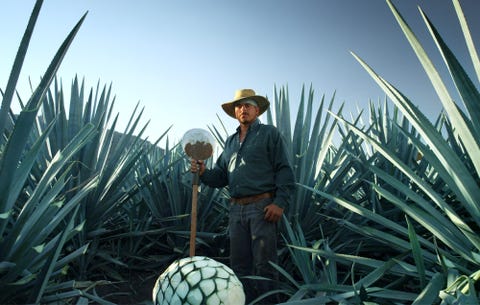
Patrón
Your bottle of Patrón is labeled "100% De Agave" with pride. Think about it: You can taste the difference between freshly squeezed orange juice and Sunny D. Same goes with tequila. To create the finest product, you need the finest blue agave. Sounds simple, right?
Not so fast. It takes nearly seven years for just one agave plant to mature, so the heart of the plant, the piña, contains a minimum of 22 percent sugar, though Patrón's agave often packs more than that.
Here's the real kicker: Agave can only be grown in specific parts of the country—one area being the state of Jalisco—according to Mexican law. That's why you can find Patrón's headquarters not too shy of the Jaliscan Highlands, where spikey blue agave stretches on for miles.
There, the matured plants are harvested by jimadors, local farmers who strip the agave of its leaves by hand using a coa, a medieval looking tool specialized for agave-chopping. Their boots become stained red from the soil, which is highly acidic and rich in iron oxide—perfect for growing.
SLOW ROASTED AGAVE SMELLS LIKE HEAVEN
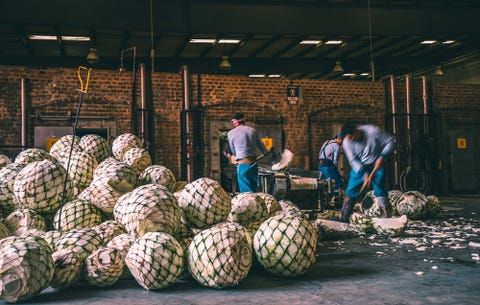
Patrón
Everything tastes better fresh out of a slow cooker, and agave is no exception. Once the piñas are prepped in the fields, they're transported to tequila headquarters: Hacienda Patrón—equipped with distillery buildings, gardens, a liquors facility, a 20-room luxury guesthouse, and all of the cocktails you could ever want—is home to the entire production process.
There, the piñas are cut into similar-sized pieces (again, by hand) to ensure even baking. After that, they're tossed into small brick ovens, where they're slow steamed for 79 hours per oven. While it's time consuming, packing the piñas into a smaller space helps convert the plant's starches into potent, flavorful sugars, something Patrón is willing to sacrifice speed for.
To get to the juice, the agave is crushed using two different methods to diversify flavors. The ancient tahona mill process crushes the agave slowly with a heavy two-ton volcanic stone, so the agave syrup sticks with the agave fiber. The modern roller mill process separates the syrup from the fiber using a machine that squeezes the cooked agave five times.
Related: A Better Way to Drink Tequila
CUSTOMIZED DISTILLATION IS KEY
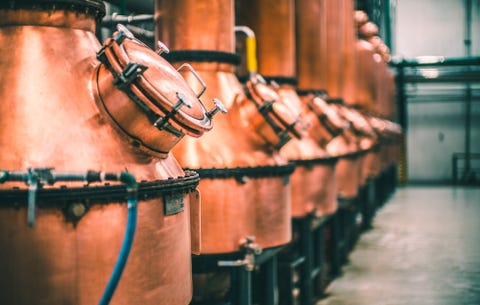
Patrón
After it's baked, the agave is fermented two ways. Like everything else, Patrón likes to take this slowly—in fact, fermentation takes about 72 hours. The roller mill method ferments the juice without the agave's fiber, the gritty part of the fruit; this creates more citrus-y notes. Then, the juice is distilled in large copper pot stills, custom designed by Patrón's master distiller, Francisco Alcaraz. The result? A unique, fruity distillate.
The tahona mill process includes both the agave juice and fiber. Here, much smaller copper pot stills are used to bring out earthy, herbaceous flavors and aromas. The copper will catch sulfurous components through the distillation process, which helps establish the sippable smoothness Patrón is known for.
Both methods require two rounds of distillation, but the final products of both types of distillation are finally blended together to create Patrón Silver, a staple in their line that's formulated to be easily mixable.
Related: 10 Cocktails Every Man Should Know How to Make
TEQUILA GETS BETTER WITH AGE, TOO
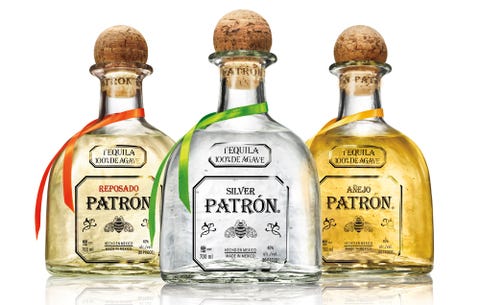
Patrón
Patrón's barrel room is a scent to behold. If you didn't know any better, you'd think you were drowning in straight tequila.
That's quality tequila in the making: Using their Silver blanco tequila as a base, Alcaraz and his team age and blend the tequila in different types of barrels, like French Limousin and Hungarian Oak, to create their aged varieties with more complex flavors.
Patrón crafts three different types of aged tequilas:
- Reposado. This translates to "rested." Aged a minimum of 2 months and no more than 1 year
- Añejo. Aged at least 12 months, but no more than 3 years
- Extra Añejo. Aged a minimum of 3 years
THOSE BOURBON BARRELS DON'T GO TO WASTE
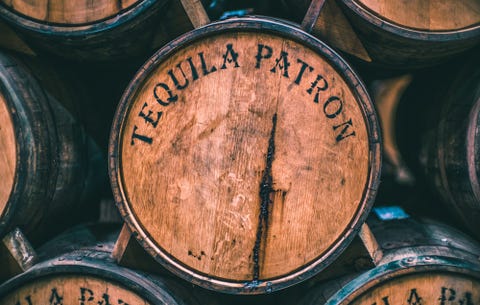
Patrón
Bourbon must be aged in a new, unused charred barrel—but some of those barrels go on to age tequila, too. Roca Patrón Reposado is rested in single-use American bourbon barrels for about five months, while Roca Patrón Añejo is aged in used bourbon barrels for 14 months. This gives the tequila its caramel color and woody taste, with a hint of nuts and raisins.
In fact, Gran Patrón Burdeos and Piedra taste quite whiskey-like. The Burdeos variety is aged for a year in American bourbon barrels, distilled for a third time, and then aged once more in French oak barrels. This serves up a smooth and sweet tequila with notes of oak and vanilla.
Related: 8 Surprising Facts About Bourbon
EACH BOTTLE IS A WORK OF ART (LITERALLY)
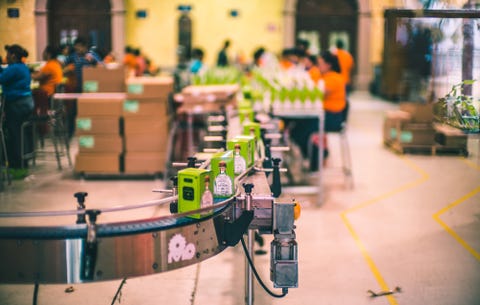
Patrón
Ever put two bottles of Patrón side by side? Look closely next time you see them sitting on a shelf at the bar, and you'll notice they're not quite the same. That's because every part of the spirit's bottling process and packaging is made and crafted by hand; from the glass bottle, cork, and label, to the tissue paper in the box.
Each worker—who is more than likely a local to the area—inspects the work from the last person that touched the bottle, meaning at least 60 hands inspect it before the final product ready to be shipped.
WHEN YOU FINALLY GET TO DRINK IT, DO IT RIGHT

Patrón
Forget what you learned after one too many late nights in college. Tequila shouldn't be thrown back like a pill that leaves a lump in your throat.
If you really want to taste the craftsmanship, sip your tequila straight up and slowly. To catch all of the flavors, use a traditional sipping glass. (To be fair, this might burn a bit if you're not used to it.)
Take a load off, toss a lime or two in that bad boy, and savor the quality that was poured into your glass.
Related Video:
Alisa Hrustic Deputy Editor, Prevention Alisa Hrustic is the deputy editor at Prevention, where she leads the brand's digital editorial strategy.
This content is created and maintained by a third party, and imported onto this page to help users provide their email addresses. You may be able to find more information about this and similar content at piano.io
What's Good to Drink With Tequila
Source: https://www.menshealth.com/trending-news/a19521594/things-you-didnt-know-about-tequila/
0 Response to "What's Good to Drink With Tequila"
Post a Comment